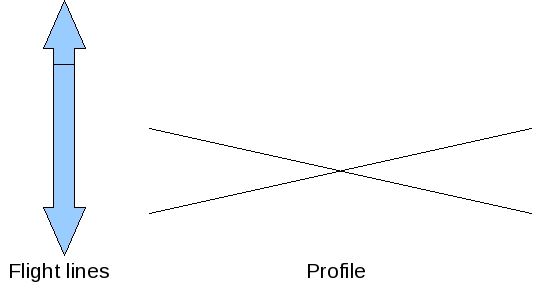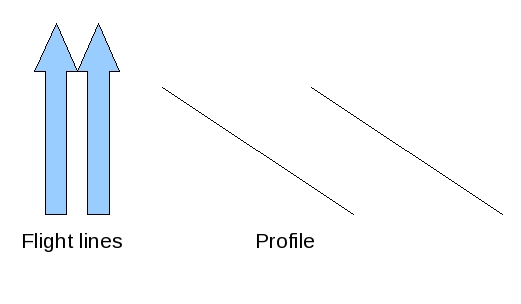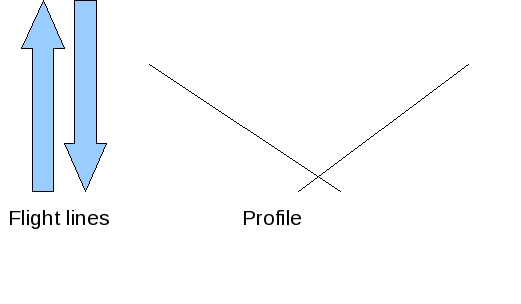| Version 19 (modified by knpa, 16 years ago) (diff) |
|---|
Lidar Processing Protocol
- Copy data onto windows machine
- Process the navigation (IPAS and GrafNav)
- Check roll vs time graph in IPAS (stick in ticket for future reference)
- Check PDOP and Combined Separation
- Iterate until we get the best trajectory we can
- Process the LIDAR using the finalised calibration parameters (ALSPP).
- In the case of images that exhibit roll offsets AFTER application of the boresight parameters then take pairs of overlapping flightlines and apply one of the following tweaking methods depending on the nature of their overlap:
- A) Opposing flight lines (fully overlapping)
- Can observe profiles across track ideally for an area of flat terrain for each pair of images and manually tweak the roll value to remove bias
- Record the final “tweak” in a text/spreadsheet file in project directory
- Try this new roll value for all other flightlines. If is not correct for the rest of the site then there is a inter-flightline roll variation. Move onto the next pair of flightlines.
- B)Parallel flight lines (semi-overlap, all same direction)
- Using overlap region for each pair of images can manually tweak roll until bias removed
- Record the final “tweak” in a text/spreadsheet file in project directory
- Try this new roll value for all other flightlines. If is not correct for the rest of the site then there is a inter-flightline roll variation. Move onto the next pair of flightlines.
- C) Parallel flight lines (semi-overlap, opposing direction)
- Look for zig-zagging elevations over all flight lines eg the site will look like: /\/\/\ (beware of true sloping terrain)
- Tweak roll manually until flight lines look more like ------. It may be difficult to see the whole site in this way so zoom in and measure offsets with the profile viewer. As long as two opposing flightlines overlap to some degree there will be a height offset at both sides of the overlap region (where the profiles cross).
- Record the final “tweak” in a text/spreadsheet file in project directory
- Try this new roll value for all other flightlines. If is not correct for the rest of the site then there is a inter-flightline roll variation. Move onto the next pair of flightlines.
- D) Non overlapping flightlines
- If we have a roll offset model (produced by analyzing the tweaks and other info noted in A to C above) that we know corrects the data then use this
- Else deliver as is informing PI there is possible (probable) bias in the data, and give an estimate of the magnitude if possible.
For each image in each data set note the following in the text/spreadsheet file:
- Calibration file used
- Flight height and direction
- Roll correction used
- Approx position (in E/N?)
- Time (from take off) of start of acquisition
- ..and any other potential correlates
- Collate the data and analyse it – look for trends within the flight data sets (per project) and also the complete set of data (all projects together).
- Perform QC
Any problems with this current LIDAR procedure, please note them here?
Attachments (3)
-
oppose.jpg
(24.4 KB) -
added by mark1 16 years ago.
Opposing flight lines
-
paralell_same.jpg
(22.0 KB) -
added by mark1 16 years ago.
Parallel same direction flight lines
-
paralell_diffjpg.jpg
(22.2 KB) -
added by mark1 16 years ago.
Parallel different direction flight lines
Download all attachments as: .zip


